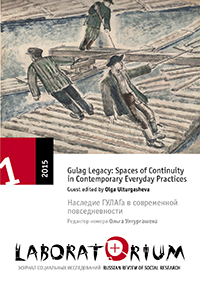ГУЛАГ в Воркуте: за пределами пространства и времени
##plugins.themes.bootstrap3.article.main##
Аннотация
В этом эссе приводятся доказательства того, что ГУЛАГ не был ограничен пространственно-временными рамками. Подобно другим недавним историографам, автор описывает ГУЛАГ и советское общество как единое целое, иллюстрируя свой тезис на примере Воркутлага и Речлага – заполярного лагерного комплекса, сооруженного в 1930-х годах. Впоследствии этот комплекс стал одним из крупнейших исправительно-трудовых лагерей в Советском Союзе, а после закрытия лагерей превратился в промпоселение. Автор, рассматривая взаимосвязанные процессы «зонификации» и «де-зонификации», показывает в своей работе сложность и изменчивость пространственных взаимоотношений между лагерями ГУЛАГа и окружающими их сообществами. Отвечая на вопросы о том, что произошло с Воркутой, когда из лагерного города она превратилась в промышленный поселок, автор приходит к выводу, что выходцы из ГУЛАГа, привычные им социальные связи и лагерные рабочие практики оказали сильнейшее влияние на развитие города и после массовых амнистий 1950-х годов. В заключение высказываются предложения о методах исследования ГУЛАГа, трактуемого как неотъемлемая часть советского общества. Эссе на английском языке.
Ключевые слова
ГУЛАГ, Воркута, пространство, границы, наследие, социальные связи, бывшие заключенные
Abstract 147 | PDF (English) Downloads 106 HTML (English) Downloads 94

